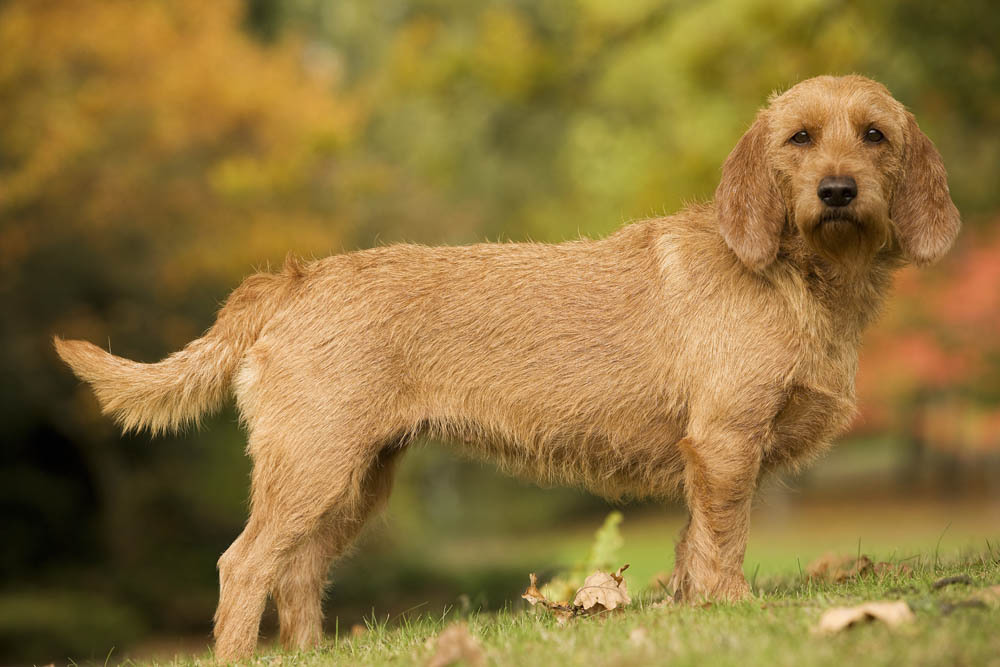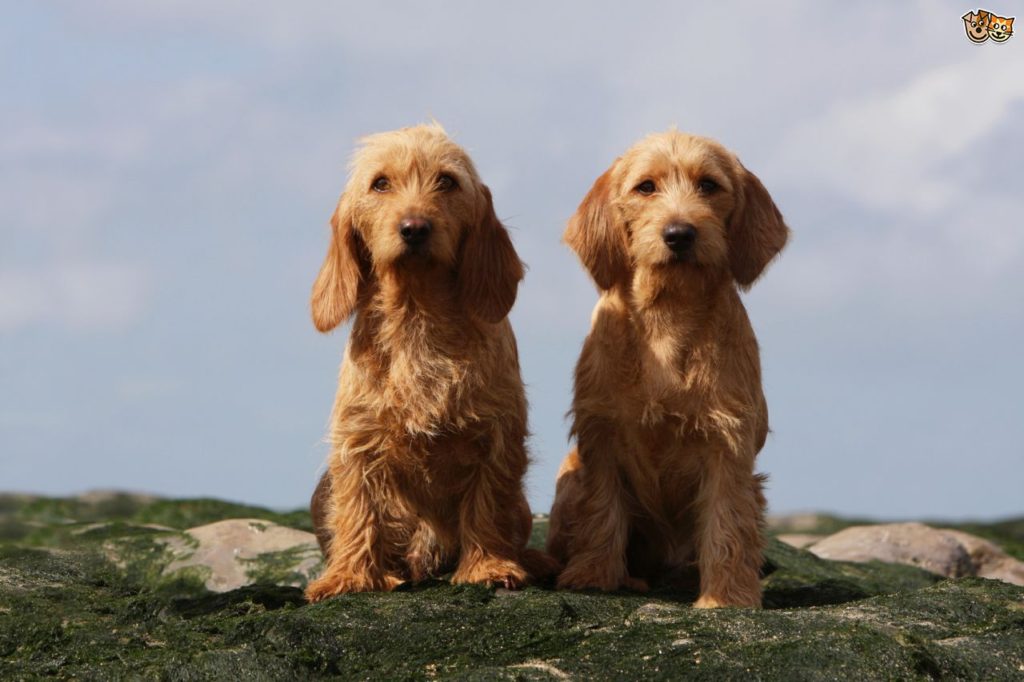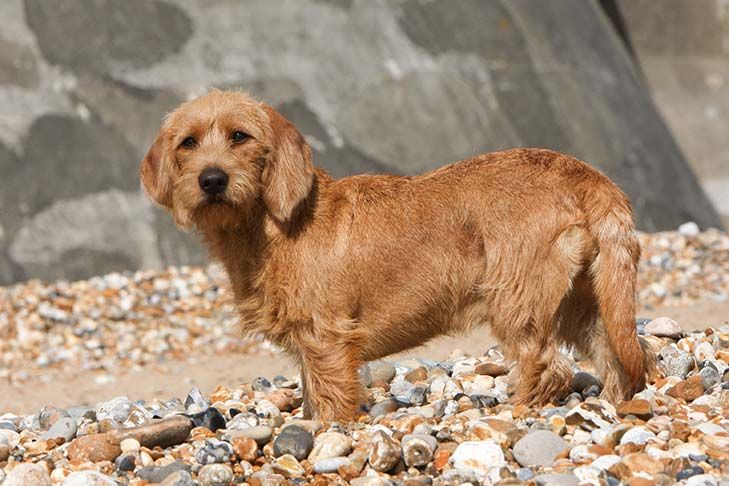The Basset Fauve de Bretagne is a short-legged hunting breed of dog of the scent hound type, originally from Brittany, a historical kingdom of France.
Appearance
The Basset Fauve de Bretagne is a smallish hound, built along the same lines as the Basset Hound, but lighter all through and longer in the leg. Wire-coated, the coat is very harsh to the touch, dense, red-wheaten or fawn. The Basset Fauve de Bretagne measures 32 – 38 cm in height and weighs between 36 – 40 lbs but due to the old, and no longer permitted, the practice of registering mixed litters of Griffon and Basset Fauves sometimes a litter of bassets will produce a long-legged dog more akin to the Griffon. They have coarse, dense fur which may require stripping. Although their coat repels dirt and does not mat easily, they still require weekly combing and brushing. The hair on the ears is shorter, finer and darker than that on the coat. The ears just reach the end of the nose rather than trailing on the ground and should be pleated. They should have dark eyes and nose and ideally no crook on the front legs. The French standard says these are the shortest backed of all the basset breeds so they generally do not appear as exaggerated as the British Basset.
History

The breed was developed in France as a hunting dog from the larger Grand Fauve de Bretagne, a breed that is now extinct. There was a rumour that the Basset Fauve de Bretagne was also close to extinction after the Second World War, and the breed was recreated using the remaining examples of the breed and crossing in Great Blue Heron and standard wirehaired Dachshunds. However, the French club denies this and says that Basset Fauve numbers were never so low. The middle-sized breed, the Griffon Fauve de Bretagne, also still exists, but it is certainly rarer than the Basset Fauve. The breed in the UK is mainly seen as a show dog and family pet, finally coming off the Kennel Club’s rare breed register in 2007. It can also be found in other parts of Europe where it is used to scent trail and also as a family pet. They are loving, happy, outgoing dogs and are good with children, but it must be remembered that they are scenthounds and do retain their love of the hunt, so they may not suit every family. In the UK the breed has no hereditary faults; however, epilepsy has been identified in some breeding lines in France and other parts of Europe. Some Basset Fauves are born with black in the coat; this may or may not go with maturity. It is less common to see them with white patches, but when they do occur, it is generally confined to the chest and top of the head. However, even though the black ticking and white patches are not accepted colours, of course, it does not interfere with their hunting ability, which is their prime job, and so these coloured Basset Fauves are still seen and occur fairly often in litters. The correct colour for a Basset Fauve is anything from fawn to red colour, but it should be solid with darker shaded ears.
Breed description

The Basset Fauve de Bretagne is a neat-looking hound, free from exaggeration and lively and friendly; as a scenthound, though, he has the usual failing of becoming absorbed with what he is scenting. He is agile enough to trouble any rabbit he scents. Where the Basset Fauve de Bretagne is still used for hunting, it is either singly or in pairs.
The Basset Fauve de Bretagne became established as a distinct breed early in the 19th century and were introduced to the UK in 1983, and their cheerful disposition has earned them a good many friends.
Overall a very sound dog, they do not appear to suffer from any particular hereditary defects. However, like all hounds, they are of an independent turn of mind, and early training in puppyhood will reap dividends later. It is never realistic to expect a hound to be obedient, as they have their own agenda much of the time, but they should become fairly cooperative. The coat is easy to care for; a regular brush will keep it smart, but, like a terrier, he will need stripping two or three times a year. This is not a difficult task, though you may prefer to leave it to a grooming parlour. A cheerful and equable breed, the Basset Fauve de Bretagne is of a size to make a handy housedog, though he has a great taste for exercise and thoroughly enjoys getting out into the fields. Most Basset Fauve de Bretagne’s can be understood because their eyes are very clear and their ears turn out when they are nervous or unsure.
